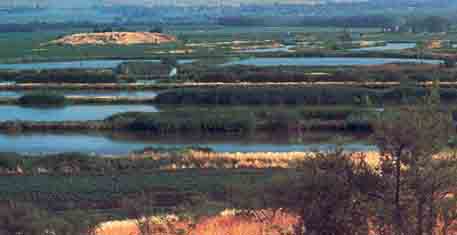Image Details

Courtesy Andrea M. Berlin
Tel Anafa, or “mound of the water heron,” a gentle rise in northern Israel’s Hula Valley (at left behind the fish ponds in the photo), was home to three settlements over three centuries. Its first settlers arrived in the third century B.C.E., after Ptolemy I claimed sovereignty over Egypt, Palestine and Phoenicia following the death of Alexander the Great in 323 B.C.E. Though no one challenged Ptolemy’s claim to Egypt, he spent three decades sparring over Palestine and Phoenicia, invading Palestine in 320 B.C.E. His chief nemesis, Seleucus I, claimed most of the former Achaemenid Persian Empire. But in 301 B.C.E. the two rivals agreed to a division, with Seleucus gaining northern and central Phoenicia and Ptolemy obtaining southern Phoenicia and Palestine, including the Hula Valley.
